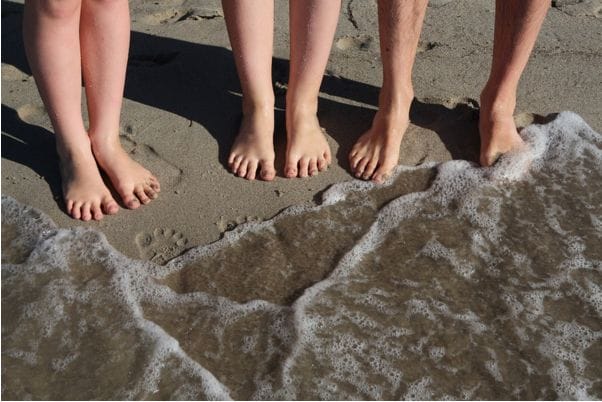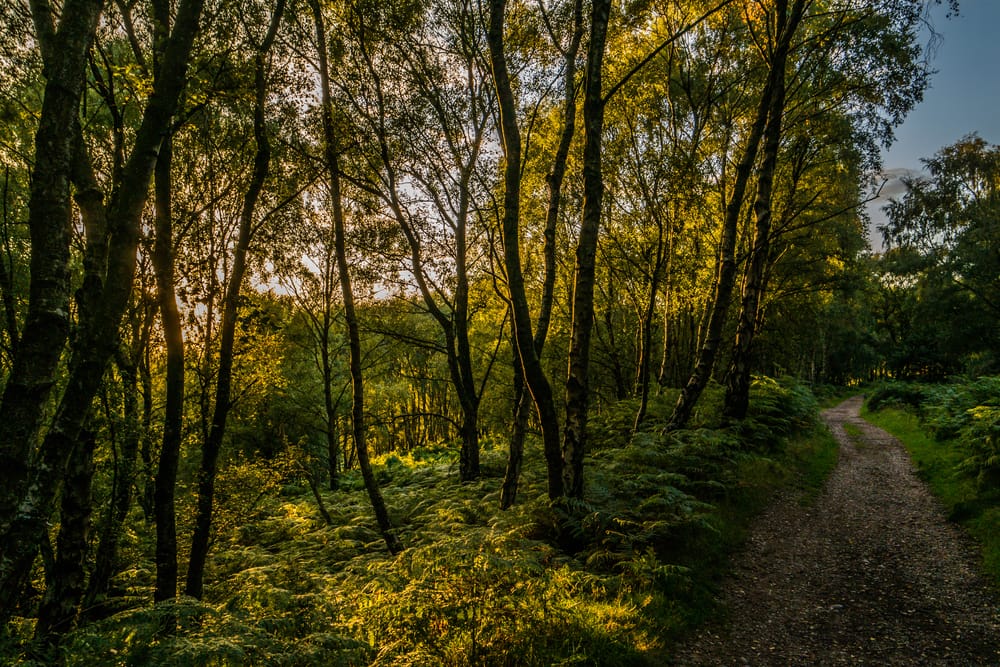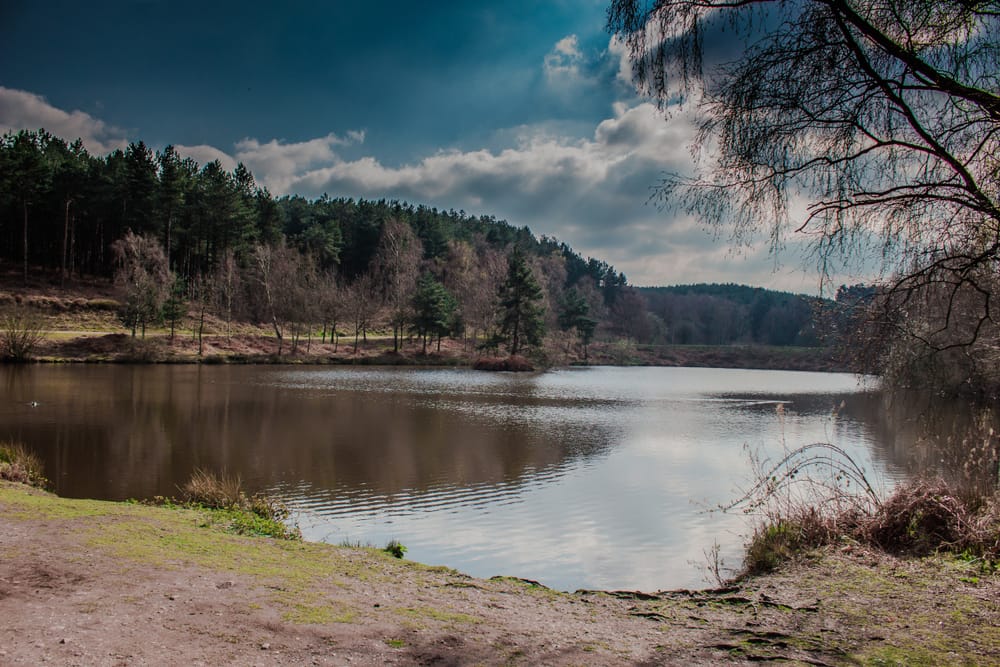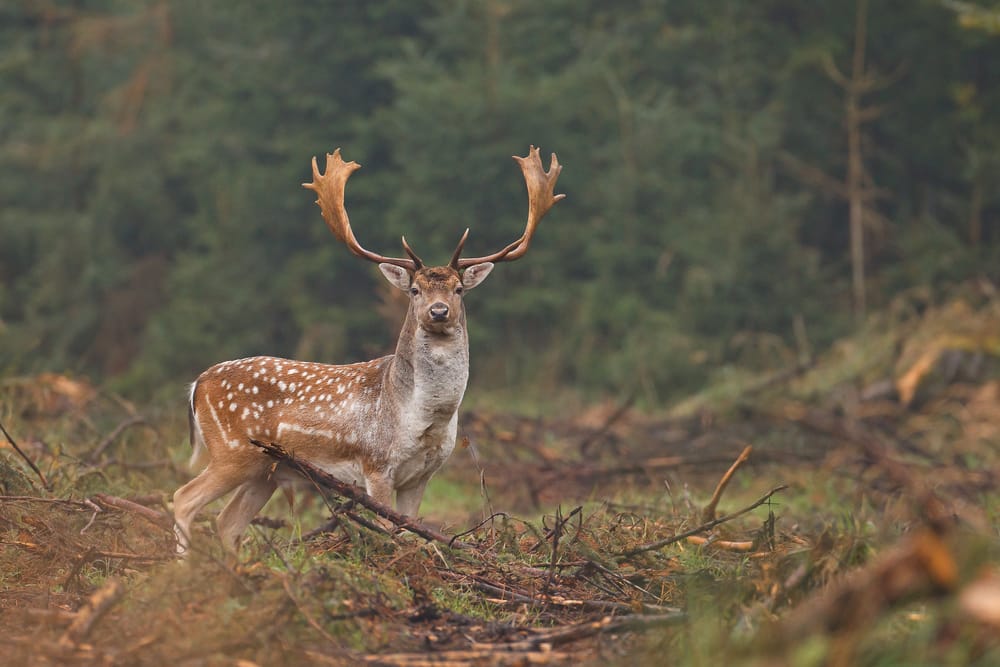Cannock Chase is positioned almost at the geographical centre of mainland Britain on the north-eastern margin of the Birmingham conurbation, and thus lies within easy reach of over three million people living within a twenty-mile radius. The area is served (if that’s the correct word) by the main London to Glasgow ‘East Coast’ rail link which stops at Stafford, also by the M6 Motorway which borders the Chase on the west. In addition, three national footpaths converge on the area, the Staffordshire Way and the Heart of England Way intersect on the Chase heathlands at Brocton Field, and the brand-new Way for the Millennium skirts the Chase along canal towpaths from Stafford to Handsacre. So what’s stopping you?
Many of the cross-Chase roads have car parks and lay-bys from which to make short excursions into the surrounding wood and heath, and the Marquis Drive Visitor Centre and Birches Valley Forest Centre both provide a number of signposted walks of varying lengths, including wheelchair-friendly routes such as the excellent TOC-H trail in Brindley Valley. For those wanting to spend more time on the Chase there are a number of seasonal camp sites. The Silvertrees Caravan Park on the Penkridge Bank Road does not cater for tents, the Caravan Club endorsed campsite at Wandon caters for tents and mobile homes of all kinds, likewise the Tackeroo campsite on Brindley Heath which originally opened only for touring caravans, allowed tents for the first time from Summer 2001, however, tents are no longer allowed due to the actions of a bunch of nogoodniks who abused the camp facilities. All of these sites, in particular Tackeroo and the Visitor Centre, are ideally situated for many woodland walks.
Before You Leave the House
Wear Appropriate Footwear – Training-shoes will suffice for most of the signposted walks from the visitor and forest centres, likewise for short walks along the many interesting trails leading from the forest car-parks, but if you are intent on longer forays across the Chase, you should acquire a decent pair of walking boots to minimise the risk of twisted ankles and a good pair of hiking socks to reduce blisters on your feet.
Wear Layers of Clothing – The best combination would be at least three layers on top, comprising tee-shirt, fleece jacket, waterproof backpack, waterproof outer-jacket, coupled with two layers on the legs, either combats or tracks, with waterproof over-trousers. This technique traps air between each layer of cloth, which then acts as an insulator. Obviously, the colder it gets, the more layers should be worn, likewise, if the weather is fine then fewer layers are needed.
Take a Rucksack – Packed with spare clothing, food, drink, and anything else you require, remembering to wrap cameras, binoculars, maps, guidebooks, etc. inside waterproof bags. It may be an idea to pack a scarf, a pair of gloves and a hat along with your waterproofs; this is mainland Britain after all. I also tend to keep a small medical kit in one of the side pockets, essential if you have kids with you. Check the weather also, if there is a chance of rain then pack in a rain jacket.
Plan Your Route – Take some time to study the route you intend to walk, using an Ordnance Survey map of the area to plan your own itinerary, or perhaps following one of the many planned walks available from the Visitor Centres. The most detailed map currently available is the superb Cannock Chase & Chasewater (Explorer#244) produced by the Ordnance Survey, but the Cannock Chase Map by Staffordshire County Council is a quarter of the price and has the added benefit of a short local guide printed on the reverse; both publications are available from many town-centre stationers.
Tell Someone Where You Are Going – Maybe not quite so important a principle nowadays, so long as you remember to charge your mobile phone before leaving the house, but consider, if you will, the outrageous call-charges imposed by mobile networks against the simplicity of a note attached to the fridge.
During Your Walk on the Chase
Stick to the Paths – Many parts of the Chase have been undermined over the years and large open fissures may lie hidden in the undergrowth. If you intend to walk off-track the best times are during the Winter and early Spring when the undergrowth is minimal, even then, one should take extra care when walking through the natural vegetation.
Walk as Quietly as Possible – This is not only for the benefit of other walkers, but the less noise you make, the more chance you have of seeing wildlife, particularly the more timid deer species. It should be noted that if you choose to play a radio loudly while walking on the Chase (or any other public space in Britain for that matter), you will not only be disturbing the wildlife, you will also be causing a public disturbance, thus breaking the law.
Check Your Footfall – Always look where you are putting your feet, especially when walking along grass covered paths or muddy tracks, also in adverse weather conditions. At the very least you may be scraping something unpleasant off your boots, at the worst an ankle may be twisted or a fall may result in broken bones. Also bear in mind that something as trivial as breaking a twig underfoot may alert wildlife to your presence and thus reduce your chances of viewing anything other than the brief tail flash of a fleeing Fallow deer. When you walk off-trail this rule becomes imperative.
Keep Dogs on a Lead – This is particularly important when walking through woodland in the early morning and late evening, when many deer are active. There are open areas on the outskirts of the Chase where dogs are allowed to run free. Large dogs should be kept on a lead at all times, especially when near children.
Take Your Litter Home – I’m sure that having taken the trouble to bring your family out for a walk in the countryside, the last thing you would wish to encounter are bilberry bushes festooned with crisp wrappers and fast food containers. Please dispose of all waste responsibly, especially glass litter, which may cause heath fires in the Summertime.






